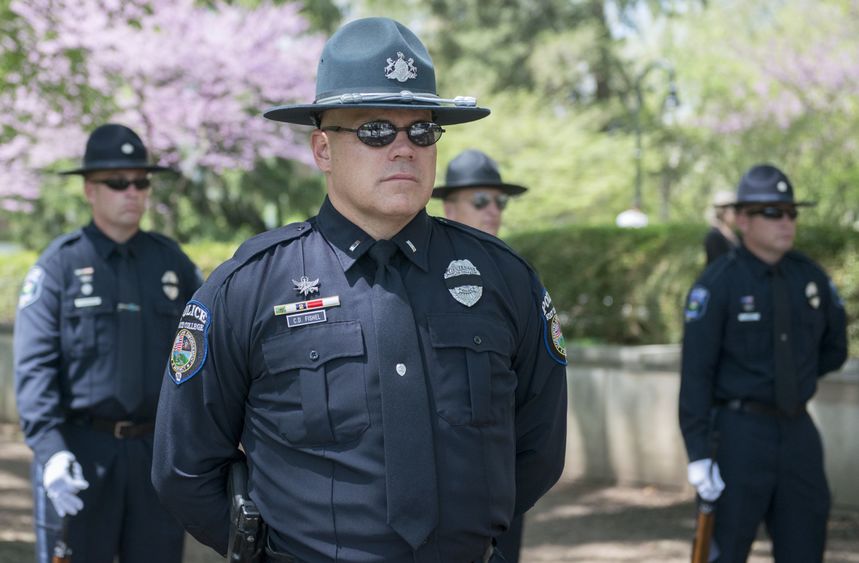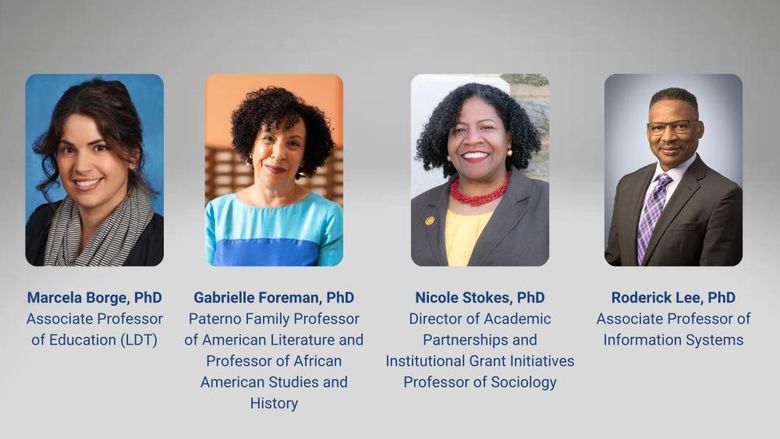
When a person knows a police officer by name and feels comfortable talking with him or her, the person is three times as likely to trust the police as a person who also knows an officer by name but feels uncomfortable engaging in conversation with the officer. This finding lends support for police initiatives to build a healthy relationship with the public through community-oriented policing.
According to a new poll, more than 8 out of 10 Pennsylvanians trust their local police, and public attitude toward police reflects public attitude toward the federal and state government. However, while support from the general public is high, there are mitigating factors for individual attitudes.
“No police can expect public support without public confidence in the police,” said Jonathan Lee, assistant professor of criminal justice in Penn State Harrisburg’s School of Public Affairs. “In the wake of unsettling conflict and escalating animosity between police and the community, we need to understand what determines a person’s trust and confidence in the local police.”
The findings are the result of data consisting of responses from 660 randomly selected adult Pennsylvania residents, who participated in the School of Public Affairs’ Pennsylvania Pre-election Poll on Policy and Governance. This was an omnibus survey administered by telephone through the Center for Survey Research at Penn State Harrisburg between Aug. 18 and Oct. 15, 2016. The poll sponsored by the Penn State Harrisburg School of Public Affairs in partnership with the Penn State Justice and Safety Institute.
“Police are the most ubiquitous representatives of government authority, given the sheer amount of their contact with the public and their impact on everyday life” said Jennifer Gibbs, assistant professor of criminal justice at Penn State. “Besides, public safety begins from calls for service and hinges on public cooperation. Academic literature tells us that public attitude toward the police is indicative of the support for the federal and state government. We identified widely acknowledged factors of individual attitudes toward the police from this literature and incorporated them in the poll.”
While the researchers found a high level of trust in local police in Pennsylvania, there existed mitigating factors based on region, race, gender, age, income, political affiliation and contact with the police.
- The most significant finding was the difference among racial groups regarding trust in the police: 86 percent of white respondents trust their local police to make decisions that are right for the community, compared with 33 percent of black or African-American respondents who felt the same way. Statistically, a white resident was 67 percent more likely to trust the local police than a nonwhite resident.
- Regional variation was observed, although not statistically significant. For example, residents in Northwestern Pennsylvania are more favorable to their police, while Southeastern residents appear slightly less favorable.
- Political affiliation appears to have a significant impact on a person’s trust in their police. A Republican is 19 percent more likely than a Democrat or other resident to trust the police.
- The average age of those with no trust in their police was 40 years old, while that of residents with trust in their police was 50 years old.
- A person with higher income was more likely than another person with lower income to trust the police. For instance, a person who makes more than $60,000 a year is 18 percent more likely to trust the police than a person who makes less than that.
- Among residents who had any contact with police, a person who was satisfied with the way police handled the situation was twice as likely to trust their local police as a person who was not satisfied.
- A person who often hears about police misconduct in the media is likely to distrust the local police.
- Having been a victim of crime appears to lower trust, but the difference was not statistically significant.
- When a person knows a police officer by name and feels comfortable talking with him or her, the person is three times as likely to trust the police as a person who also knows an officer by name but feels uncomfortable engaging in conversation with the officer. This finding lends support for police initiatives to build a healthy relationship with the public through community-oriented policing.
The researchers found that closing the gap in social distance – the perception of closeness one feels toward the police – is an important step to improving public trust in police. One indicator of social distance is whether a citizen knows a police officer by name. Acquaintance with a police officer varied across the Commonwealth. More Pennsylvanians living in Northwestern Pennsylvania know a local police officer by name and are comfortable talking with him/her (62 percent), while 37.5 percent of Southeastern residents feel the same.
Almost half (49.3 percent) of the Pennsylvanians surveyed know a local police officer (who is not a family member) by name, although 4.6 percent would not feel comfortable talking with the officer. Knowing a police officer differs by group. Significantly more men (49.8 percent) than women (39.7 percent) know a police officer by name and feel comfortable talking to that officer. While about half of white (49 percent) and black or African-American (48 percent) respondents know a police officer, significantly more whites (46 percent) feel comfortable talking to that officer than black or African-American (30 percent) respondents.
“The data suggest that police may be able to close the social distance gap and, in the process, improve public attitudes toward police through connecting more with the community,” Lee said.
Gibbs added, “The challenge is for the police and the public to interact in such a way that all parties feel comfortable communicating with one another about criminal justice issues.”





